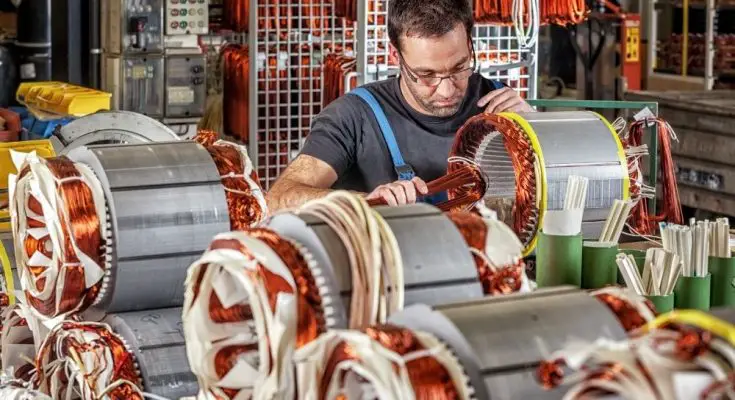So many industries rely on electric motors to run their essential equipment. These machines are complex and have several moving parts that work together to turn electrical energy into mechanical power. If you’re not an expert in all things industrial, you might not even realize how some of the elements operate. Here are some components that make up industrial electric motors.
Armature
One of an industrial motor’s most noticeable parts is the armature. Also called the rotor, this is the spinning mechanism that moves the shaft to create useable energy. This part of a motor works with conductive currents and magnetic fields to generate electricity. Through attraction and repulsion, the armature will rotate and create the power you need to run your heavy equipment.
Stator
Another important component of electric motors you should know about is the stator. This is the stationary part of every motor where energy moves through. Stators work with the rotor and other electromagnetic elements to convert energy and transport it to where it needs to go. The stator determines the motor’s torque levels and is therefore important when selecting the right motor for your project.
Bearings
Some components that make up industrial electric motors need support structures to stay in place. This is where bearings come into play. Bearings help keep the shaft in the correct position so it can rotate and produce energy for facilities. With help from the motor housing, these features keep inner motor mechanisms stable so that they can perform their jobs and help the motor function properly.
Windings
Industrial motors produce energy through magnetic fields. Electric motors feature windings to create these conditions and power equipment. Windings are coiled wire components that usually feature some kind of insulation to increase their longevity. These coils are some of the most temperamental electric motor parts, so knowing what they are and how they operate is essential for maintenance and repairs.
Air Gap
Even though it’s not a physical component, the air gap is essential to every electric motor’s performance. The “air gap” refers to the space between the rotor and stator. The distance between these two parts increases the magnetizing currents as the gap gets wider. Industrial motor air gaps should be as small as possible to operate at their fullest capacity.
Electric motor components and construction are surprisingly interesting when you break everything down. Now that you know about the various elements that make up these cool devices, you can have a better understanding of the industrial world around you.



